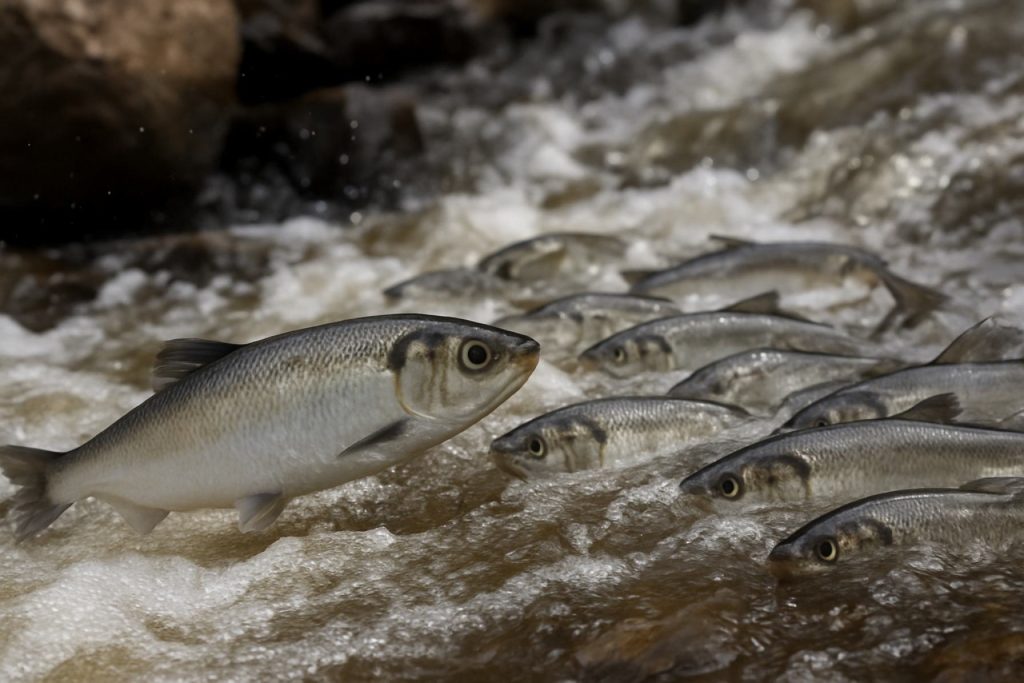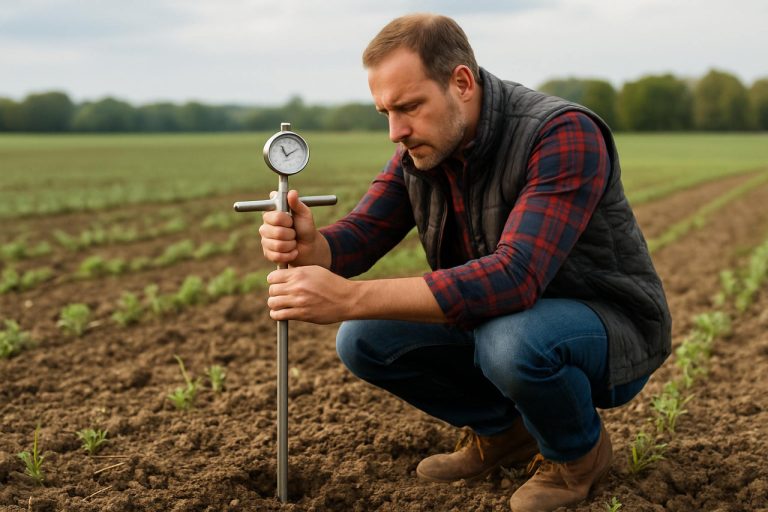
The Urgent Fight to Restore River Herring: Why Their Survival Matters for Ecosystems and Communities. Explore the Science, Challenges, and Solutions Behind River Herring Conservation.
- Introduction: The Plight of River Herring
- Ecological Importance of River Herring
- Historical Decline: Causes and Consequences
- Current Population Status and Trends
- Threats: Habitat Loss, Overfishing, and Barriers
- Conservation Strategies and Success Stories
- Role of Policy and Legislation
- Community Engagement and Indigenous Perspectives
- Innovative Research and Monitoring Techniques
- Future Directions: Ensuring Long-Term Recovery
- Sources & References
Introduction: The Plight of River Herring
River herring, a collective term for two closely related species—alewife (Alosa pseudoharengus) and blueback herring (Alosa aestivalis)—are anadromous fish native to the Atlantic coast of North America. These species play a vital ecological role, serving as a crucial food source for a variety of predators, including larger fish, birds, and marine mammals. Historically, river herring populations supported robust commercial and recreational fisheries and were integral to the cultural and economic fabric of many coastal communities.
Over the past century, river herring populations have experienced dramatic declines. The primary drivers of this decline include habitat loss due to dam construction and urban development, overfishing, water pollution, and increased predation by invasive species. Dams and other barriers have blocked access to traditional spawning grounds, fragmenting habitats and severely limiting reproductive success. Additionally, bycatch in ocean fisheries has further reduced their numbers, compounding the effects of habitat degradation.
The ecological consequences of river herring declines are far-reaching. As forage fish, river herring are a keystone species in both freshwater and marine ecosystems. Their absence disrupts food webs, affecting the abundance and health of predator populations such as striped bass, ospreys, and seals. Furthermore, river herring migrations historically contributed to nutrient cycling between marine and freshwater environments, supporting the productivity of riverine habitats.
Recognizing the urgent need for action, numerous organizations and government agencies have initiated conservation efforts aimed at reversing the decline of river herring. These initiatives include habitat restoration, dam removal or modification to improve fish passage, stricter fisheries management, and comprehensive monitoring programs. The National Oceanic and Atmospheric Administration (NOAA) has been a leading authority in river herring conservation, coordinating research, policy, and restoration projects along the Atlantic coast. State agencies, such as the Massachusetts Division of Marine Fisheries, and non-profit organizations like the The Nature Conservancy, also play significant roles in local and regional conservation strategies.
Despite these efforts, river herring remain a species of concern, and their recovery is an ongoing challenge. Continued collaboration among federal, state, and non-governmental partners is essential to restore river herring populations and the ecological integrity of the watersheds they inhabit.
Ecological Importance of River Herring
River herring, a collective term for alewife (Alosa pseudoharengus) and blueback herring (Alosa aestivalis), play a pivotal ecological role in freshwater and marine ecosystems along the Atlantic coast of North America. These anadromous fish migrate from the ocean to freshwater rivers to spawn, serving as a crucial link between marine and inland environments. Their annual migrations deliver marine-derived nutrients upstream, enriching riverine food webs and supporting the productivity of aquatic habitats.
As forage fish, river herring are a foundational food source for a wide array of predators. Their eggs, larvae, and adults are consumed by numerous species, including striped bass, bluefish, ospreys, herons, bald eagles, and marine mammals. This trophic significance underpins the health and stability of both freshwater and coastal marine ecosystems. The decline of river herring populations has been associated with reduced prey availability for these predators, potentially disrupting ecological balances and diminishing biodiversity.
River herring also contribute to ecosystem processes through their spawning activities. The act of spawning disturbs riverbed sediments, which can enhance nutrient cycling and create microhabitats for aquatic invertebrates. Additionally, the decomposition of post-spawning adults releases organic matter and nutrients, further supporting primary productivity and food web dynamics in riverine systems.
The ecological importance of river herring has prompted significant conservation attention. Organizations such as the U.S. Fish and Wildlife Service and the Atlantic States Marine Fisheries Commission (ASMFC) have recognized river herring as species of concern, emphasizing their role in ecosystem health and the need for coordinated management. The ASMFC, an interstate compact responsible for the conservation of Atlantic coastal fishery resources, has implemented management plans aimed at restoring river herring populations and their habitats.
Efforts to conserve river herring not only benefit the species themselves but also enhance the resilience and productivity of entire aquatic ecosystems. By maintaining robust river herring populations, conservation initiatives help sustain the intricate web of life that depends on these migratory fish, highlighting their irreplaceable ecological value.
Historical Decline: Causes and Consequences
River herring, a term encompassing both alewife (Alosa pseudoharengus) and blueback herring (Alosa aestivalis), were once among the most abundant and ecologically significant fish species along the Atlantic coast of North America. Historically, these anadromous fish migrated in vast numbers from the ocean to freshwater rivers to spawn, supporting commercial fisheries, indigenous communities, and a wide array of wildlife. However, since the late 19th century, river herring populations have experienced a dramatic decline, with some runs reduced by over 95% in certain regions.
The primary causes of this decline are multifaceted. One of the most significant factors has been the construction of dams and other barriers, which have blocked access to traditional spawning habitats. As industrialization spread throughout the Northeast and Mid-Atlantic, thousands of dams were erected, fragmenting river systems and preventing river herring from completing their life cycle. According to the National Oceanic and Atmospheric Administration (NOAA), over 85% of historic river herring spawning habitat is now inaccessible due to such obstructions.
Overfishing has also played a critical role. In the 19th and early 20th centuries, river herring supported large-scale commercial and subsistence fisheries. Intense harvest pressure, both in rivers and at sea, led to population collapses in many areas. Bycatch in ocean fisheries targeting other species continues to threaten river herring, as documented by the Atlantic States Marine Fisheries Commission (ASMFC), an interstate compact responsible for the conservation and management of Atlantic coastal fishery resources.
Additional stressors include water pollution from agricultural runoff, urbanization, and industrial discharges, which degrade water quality and spawning habitat. Climate change is further exacerbating these challenges by altering river flow regimes and water temperatures, potentially disrupting migration cues and spawning success.
The consequences of river herring decline are profound. Ecologically, these fish are a keystone species, serving as a vital food source for birds, mammals, and predatory fish. Their loss has ripple effects throughout aquatic and terrestrial ecosystems. Economically and culturally, the decline has impacted commercial and recreational fisheries, as well as the traditions of indigenous and local communities who have relied on river herring for generations. Recognizing these far-reaching impacts, organizations such as NOAA and ASMFC have prioritized river herring conservation, emphasizing habitat restoration, fish passage improvements, and sustainable management to reverse historical declines.
Current Population Status and Trends
River herring, a collective term for two closely related species—alewife (Alosa pseudoharengus) and blueback herring (Alosa aestivalis)—are anadromous fish native to the Atlantic coast of North America. Historically, these species supported robust commercial and recreational fisheries and played a vital ecological role as forage for a variety of predators. However, over the past several decades, river herring populations have experienced dramatic declines throughout their range.
Current assessments indicate that river herring populations remain at a fraction of their historical abundance. According to the National Oceanic and Atmospheric Administration (NOAA) Fisheries, both alewife and blueback herring are considered “species of concern” due to significant population reductions and ongoing threats. The Atlantic States Marine Fisheries Commission (ASMFC), an interstate compact responsible for managing migratory fish along the U.S. Atlantic coast, has documented that river herring runs have declined by more than 95% in many rivers since the mid-20th century.
The most recent coastwide stock assessment, coordinated by the ASMFC, found that while some local populations have shown signs of stabilization or modest recovery—often in response to targeted conservation actions such as dam removals and improved fish passage—most river herring stocks remain depleted. The assessment highlights that the majority of monitored river systems continue to exhibit low or declining trends in adult returns, with only a handful of rivers demonstrating sustained increases in spawning adults.
Several factors contribute to the ongoing low abundance of river herring. These include habitat loss and fragmentation due to dams and culverts, overfishing (historically and in some cases ongoing), bycatch in ocean fisheries, water quality degradation, and climate change impacts. The U.S. Fish and Wildlife Service (USFWS) and NOAA Fisheries have both emphasized the importance of continued monitoring and adaptive management to track population trends and evaluate the effectiveness of conservation measures.
In summary, while there are isolated examples of recovery, the overall status of river herring populations remains precarious. Continued collaborative efforts among federal and state agencies, non-governmental organizations, and local communities are essential to reverse the long-term declines and ensure the persistence of these ecologically and culturally significant species.
Threats: Habitat Loss, Overfishing, and Barriers
River herring, a term encompassing both alewife (Alosa pseudoharengus) and blueback herring (Alosa aestivalis), are anadromous fish native to the Atlantic coast of North America. Their populations have experienced dramatic declines over the past century, primarily due to three interrelated threats: habitat loss, overfishing, and the proliferation of barriers such as dams.
Habitat loss is a critical factor in the decline of river herring. These fish require unobstructed access to freshwater rivers and streams for spawning. Urbanization, agricultural development, and deforestation have led to the degradation and fragmentation of these habitats. Pollution from runoff and altered water flow regimes further reduce the quality and availability of suitable spawning grounds. The loss of riparian buffers and wetlands also diminishes nursery habitats essential for juvenile survival, compounding the species’ vulnerability.
Overfishing has historically exerted significant pressure on river herring populations. Both commercial and recreational fisheries targeted river herring for use as bait, food, and in reduction fisheries. Intense harvests, particularly during spawning runs, led to precipitous population declines. Although many states have since implemented moratoria or strict regulations on river herring harvest, bycatch in other fisheries—especially offshore Atlantic herring and mackerel fisheries—remains a persistent threat. Bycatch mortality can undermine recovery efforts, as large numbers of river herring are unintentionally captured and killed in trawl nets targeting other species.
Barriers such as dams, culverts, and other in-stream structures present perhaps the most formidable obstacle to river herring conservation. These barriers block or impede access to historical spawning and rearing habitats, fragmenting populations and reducing reproductive success. The construction of thousands of dams along the Eastern Seaboard since the 19th century has eliminated access to vast stretches of riverine habitat. Even where fish passage structures exist, they are often inadequate for river herring, which are less adept at navigating fish ladders than some other migratory species. The cumulative effect of these barriers is a dramatic reduction in available habitat and genetic exchange between populations.
Addressing these threats requires coordinated action among federal and state agencies, non-governmental organizations, and local communities. Agencies such as the U.S. Fish and Wildlife Service and the National Oceanic and Atmospheric Administration (NOAA) play leading roles in river herring conservation, supporting habitat restoration, dam removal, and fisheries management initiatives. Collaborative efforts to restore connectivity, improve water quality, and regulate harvest are essential to reversing the decline of these ecologically and culturally significant fish.
Conservation Strategies and Success Stories
River herring, comprising alewife (Alosa pseudoharengus) and blueback herring (Alosa aestivalis), are anadromous fish species native to the Atlantic coast of North America. Their populations have experienced dramatic declines due to habitat loss, overfishing, and barriers to migration such as dams. In response, a range of conservation strategies have been implemented by governmental agencies, non-profit organizations, and local communities to restore river herring populations and their habitats.
One of the most significant conservation strategies has been the removal or modification of dams and other barriers that impede river herring migration. Restoring access to historical spawning grounds is critical, as these fish must travel from the ocean to freshwater rivers to reproduce. Notable success stories include the removal of the Edwards Dam on Maine’s Kennebec River, which reopened over 17 miles of habitat and led to a rapid resurgence of river herring runs. Similar projects have been undertaken throughout the Northeast, often coordinated by agencies such as the U.S. Fish and Wildlife Service and the National Oceanic and Atmospheric Administration (NOAA), both of which play leading roles in fisheries restoration and habitat connectivity.
In addition to physical habitat restoration, regulatory measures have been enacted to protect river herring from overexploitation. Many states have imposed moratoria on commercial and recreational harvests, allowing populations to recover. The Atlantic States Marine Fisheries Commission (ASMFC), an interstate compact responsible for managing shared fishery resources, has developed and implemented management plans that set harvest limits, require monitoring, and promote sustainable practices across the species’ range.
Community-based monitoring and restoration efforts have also contributed to conservation successes. Local watershed associations and volunteer groups conduct annual fish counts, remove invasive species, and engage in public education campaigns to raise awareness about the importance of river herring. These grassroots initiatives often complement larger-scale projects and foster stewardship at the local level.
Collectively, these strategies have yielded measurable improvements in some river herring populations, demonstrating the effectiveness of coordinated conservation actions. Continued collaboration among federal and state agencies, non-profit organizations, and local communities remains essential to ensure the long-term recovery and resilience of river herring throughout their native range.
Role of Policy and Legislation
Policy and legislation play a pivotal role in the conservation of river herring, a term encompassing two anadromous fish species: alewife (Alosa pseudoharengus) and blueback herring (Alosa aestivalis). These species have experienced dramatic population declines due to overfishing, habitat loss, and barriers to migration. In response, federal, state, and tribal authorities have enacted a range of regulatory measures to protect and restore river herring populations.
At the federal level, the National Oceanic and Atmospheric Administration (NOAA) is a central authority in river herring conservation. NOAA manages river herring under the Magnuson-Stevens Fishery Conservation and Management Act, which mandates the sustainable management of marine resources. While river herring are not currently listed under the Endangered Species Act, NOAA has conducted status reviews and continues to monitor their populations, providing guidance and support for conservation initiatives.
The Atlantic States Marine Fisheries Commission (ASMFC) is another key organization, coordinating interstate management of river herring along the Atlantic coast. In 2012, the ASMFC implemented Amendment 2 to the Interstate Fishery Management Plan for Shad and River Herring, which required states to close their river herring fisheries unless they could demonstrate sustainable management. This policy led to widespread closures and the development of state-specific sustainable fishery management plans, significantly reducing fishing pressure on depleted stocks.
State governments have also enacted legislation to protect river herring. Many states have established moratoria on commercial and recreational harvest, imposed gear restrictions, and invested in fish passage restoration projects. For example, dam removals and the installation of fish ladders have been prioritized to restore access to historical spawning habitats, a critical step in population recovery.
Tribal governments, particularly in the Northeast, have asserted their rights and responsibilities in river herring stewardship, often collaborating with state and federal agencies to ensure culturally and ecologically appropriate management.
Internationally, river herring conservation is supported by agreements such as the Convention on the Conservation of Migratory Species of Wild Animals, which encourages cross-border cooperation for migratory fish. Collectively, these policy and legislative frameworks form the backbone of river herring conservation, providing the regulatory structure, funding, and collaborative mechanisms necessary to address the complex challenges facing these iconic fish.
Community Engagement and Indigenous Perspectives
Community engagement and the integration of Indigenous perspectives are increasingly recognized as essential components in effective river herring conservation. River herring, which include alewife (Alosa pseudoharengus) and blueback herring (Alosa aestivalis), are anadromous fish species native to the Atlantic coast of North America. Their populations have declined significantly due to habitat loss, overfishing, and barriers to migration. Addressing these challenges requires not only scientific and regulatory approaches but also the active participation of local communities and the inclusion of traditional ecological knowledge.
Local communities play a vital role in river herring conservation through stewardship, monitoring, and advocacy. Community-based organizations often lead efforts to restore spawning habitats, remove barriers such as dams, and monitor fish runs. These grassroots initiatives foster a sense of ownership and responsibility, which can lead to more sustainable and long-lasting conservation outcomes. For example, volunteer-driven fish counts and habitat restoration projects have been instrumental in tracking population trends and improving river connectivity. Such efforts are frequently supported by partnerships with governmental agencies like the U.S. Fish and Wildlife Service and regional bodies such as the Atlantic States Marine Fisheries Commission, which coordinate management and recovery plans for river herring along the Atlantic coast.
Indigenous communities have a deep, longstanding relationship with river herring, which are culturally and nutritionally significant. Many tribes in the Northeast, such as the Wampanoag and Penobscot, have relied on river herring for sustenance and ceremonial purposes for generations. Indigenous knowledge systems, which encompass observations of fish behavior, migration timing, and ecosystem changes, provide valuable insights that complement scientific research. Collaborative projects that respect and incorporate Indigenous perspectives can enhance conservation strategies. For instance, co-management agreements and consultation processes ensure that tribal voices are included in decision-making, leading to more equitable and effective outcomes.
Recognizing the importance of these perspectives, organizations like the U.S. Environmental Protection Agency and the National Oceanic and Atmospheric Administration have increasingly emphasized the need for inclusive conservation planning. By fostering partnerships with Indigenous nations and local communities, these agencies aim to restore river herring populations while honoring cultural traditions and promoting environmental justice. Ultimately, the success of river herring conservation depends on the collective efforts of all stakeholders, grounded in mutual respect and shared stewardship of natural resources.
Innovative Research and Monitoring Techniques
Innovative research and monitoring techniques are playing a pivotal role in advancing river herring conservation efforts. River herring, which include alewife (Alosa pseudoharengus) and blueback herring (Alosa aestivalis), are anadromous fish species whose populations have declined significantly due to habitat loss, overfishing, and barriers to migration. To address these challenges, scientists and conservation organizations are employing a suite of modern technologies and methodologies to better understand river herring populations and inform management strategies.
One of the most significant advancements is the use of environmental DNA (eDNA) sampling. This technique allows researchers to detect the presence of river herring in waterways by analyzing water samples for genetic material shed by the fish. eDNA is particularly valuable for monitoring hard-to-reach habitats and for early detection of spawning runs, providing a non-invasive and highly sensitive tool for population assessments. Agencies such as the United States Geological Survey have been instrumental in developing and validating eDNA protocols for river herring and other migratory fish.
Acoustic telemetry is another innovative approach, involving the tagging of individual fish with small transmitters that emit unique acoustic signals. Arrays of underwater receivers track the movements of tagged river herring, yielding detailed data on migration timing, habitat use, and survival rates. This technology has enabled organizations like the National Oceanic and Atmospheric Administration (NOAA) Fisheries to map migration corridors and identify critical bottlenecks or barriers, such as dams, that impede upstream passage.
Remote sensing and drone-based aerial surveys are also being integrated into monitoring programs. These tools allow for the rapid assessment of riverine habitats and the identification of spawning aggregations from above, reducing the need for labor-intensive ground surveys. The United States Environmental Protection Agency (EPA) and state-level agencies have supported the adoption of these technologies to enhance habitat mapping and restoration planning.
In addition to technological innovations, collaborative data-sharing platforms are improving the coordination of research and management. Multi-agency initiatives, such as those led by the Atlantic States Marine Fisheries Commission, facilitate the aggregation and analysis of monitoring data across the species’ range. This collaborative approach ensures that conservation actions are informed by the most current and comprehensive information available, ultimately supporting the recovery and long-term sustainability of river herring populations.
Future Directions: Ensuring Long-Term Recovery
Ensuring the long-term recovery of river herring populations—specifically alewife (Alosa pseudoharengus) and blueback herring (Alosa aestivalis)—requires a multifaceted approach that addresses both immediate threats and systemic challenges. Future conservation efforts must integrate habitat restoration, improved fish passage, adaptive management, and robust monitoring, while fostering collaboration among governmental agencies, non-profit organizations, and local communities.
A primary focus for future action is the continued removal or modification of barriers such as dams, which impede river herring migration to spawning habitats. Strategic dam removals and the installation of effective fishways have already demonstrated success in restoring access to critical upstream habitats. Expanding these efforts, guided by scientific assessments and prioritization frameworks, will be essential for reconnecting fragmented river systems and supporting population recovery (U.S. Fish and Wildlife Service).
Water quality improvement remains a cornerstone of river herring conservation. Addressing nutrient pollution, sedimentation, and chemical contaminants through watershed management and the enforcement of environmental regulations will enhance spawning and nursery habitats. Partnerships with agricultural, municipal, and industrial stakeholders are vital to implement best management practices that reduce runoff and restore riparian buffers (U.S. Environmental Protection Agency).
Adaptive management, informed by ongoing research and monitoring, is critical for responding to emerging threats such as climate change, which alters river flow regimes and water temperatures. Developing predictive models and scenario planning can help resource managers anticipate and mitigate the impacts of shifting environmental conditions on river herring life cycles (National Oceanic and Atmospheric Administration).
Effective conservation also depends on coordinated management across jurisdictions. River herring are anadromous, migrating between freshwater and marine environments, which necessitates collaboration among state, federal, and tribal agencies. The Atlantic States Marine Fisheries Commission plays a central role in developing and implementing coastwide management plans, setting harvest limits, and facilitating data sharing among partners.
Finally, public engagement and education are essential for sustaining conservation momentum. Community-based monitoring, citizen science initiatives, and outreach programs can foster stewardship and support for river herring recovery. By integrating science, policy, and public participation, future conservation strategies can ensure the resilience and long-term viability of river herring populations throughout their native range.
Sources & References
- National Oceanic and Atmospheric Administration (NOAA)
- The Nature Conservancy
- U.S. Fish and Wildlife Service
- Atlantic States Marine Fisheries Commission



